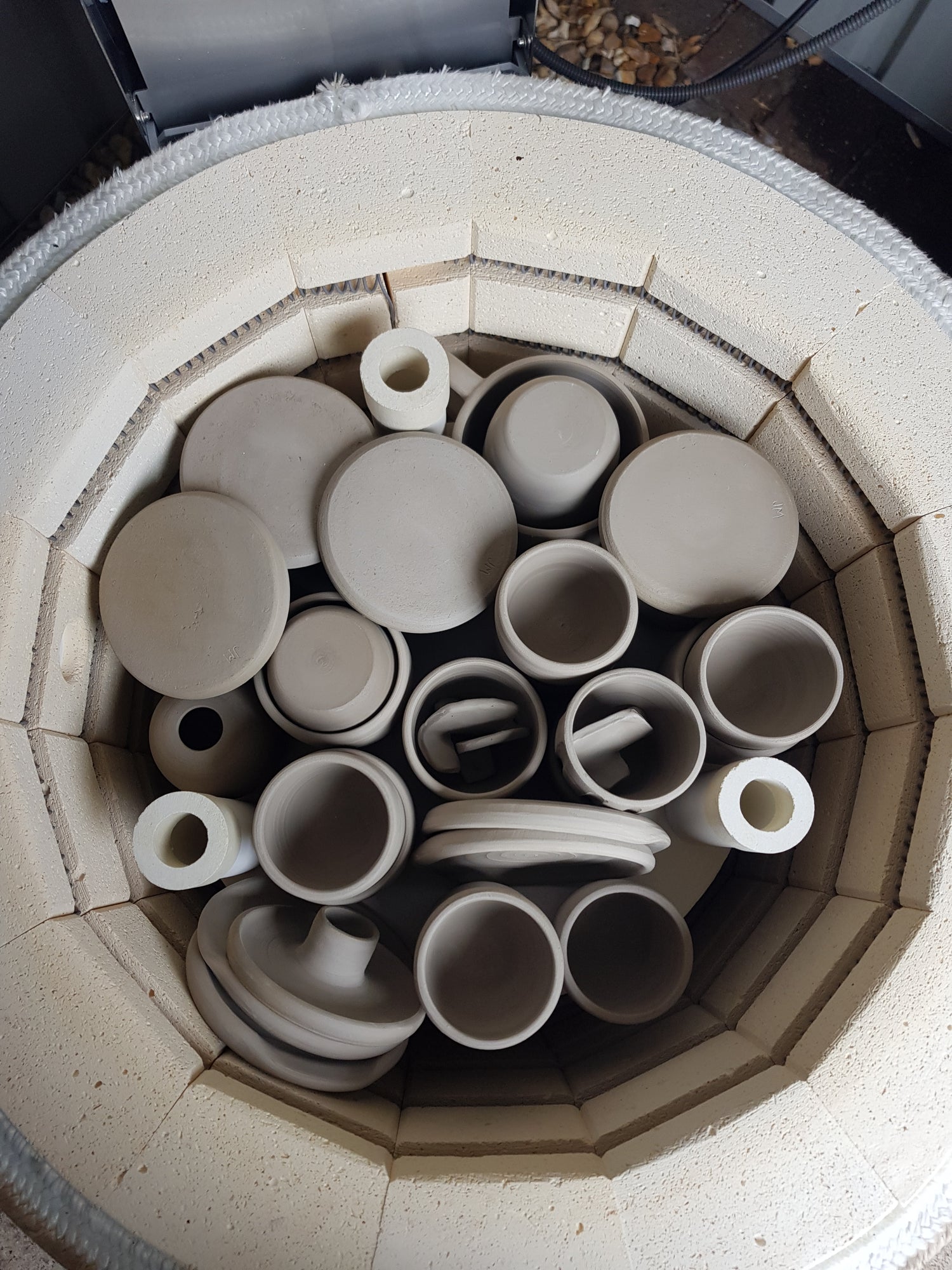How I make my ceramics
All my ceramics are individually handmade by me in my small studio on a farm in Ardeley, Hertfordshire, UK.
I make small batches of around 70 pieces which start to finish, take around 1 month. Each piece no matter how big or small, goes through the same 14 step process –

Stage 1
Throwing
- The clay is prepared - weighed out and "wedged" to remove any air bubbles.
- The initial form of a piece is created by being "thrown" on the potters wheel.
- Drying time (1-3 days).
- When partially dry, the shape is refined by being trimmed on the wheel and mugs have their handles made and attached.
- Every piece gets my makers mark stamped onto the base before being left to fully dry.
- Drying time (2-10 days, depending on the thickness of the piece and studio temperature/weather).

Stage 2
First firing
7. The first (bisque) firing – the kiln will reach 950°C which takes 13 hours.
8. After cooling for 24 hours, everything ise unloaded and wiped over with a damp cloth to remove clay dust and prepare for glazing.
9. Wax is applied with a brush to the base of each piece to prevent glaze from absorbing, so they don't fuse to the kiln shelf!

Stage 3
Glazing
10. Glazing time - each piece is dipped in, or painted with 1-3 types of glaze.
11. The bases are cleaned to make sure they're free from glaze.
12. The kiln is loaded for the final time, this time for the glaze firing which will reach 1250°C and takes 9-11 hours.
13. Around 24 hours after the kiln has finished it's time to unload it.
14. The base of each piece is sanded and finally finished!
It's a long process
When pieces are finished that's not the end of the process as they need to be photographed and uploaded to the website!
As you can see, completing even a small batch of ceramics is a lengthy and time-consuming process, with plenty of chances for things to go wrong. But it's always worth it, and despite the hard work, I’m always excited to begin the next batch!
A sustainable business
I aim to keep the making and shipping process as eco friendly as possible. Here are some of the ways I adopt sustainability -
- Only firing the kiln when it is completely full.
- All used clay which doesn't make it into the kiln is reclaimed so it can be used again.
- I use recycled water for throwing, washing equipment, reclaiming clay and cleaning glaze.
- I use recyclable and compostable packaging and reuse packing materials from my own deliveries where possible.